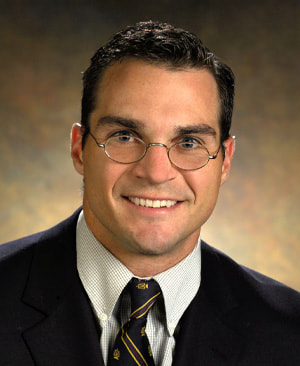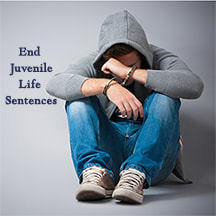Appeals court's electronic monitoring ruling is in favor of youth but skips the big questions12/14/2021  Gill Gill By Gretchen Schuldt A judge who orally gave one disposition for a juvenile offender but issued a different disposition in writing must adhere to his oral order, the state Court of Appeals ruled Tuesday. The ruling means that Brandon, if still on court-ordered supervision, does not have to wear an ankle bracelet unless the state specifically requests it and the judge agrees. District III Appellate Judge Gregory B. Gill Jr. did not rule on a key issue raised in the case: Is electronic monitoring something the court must order or can it be implemented by a juvenile justice worker as a "case management tool"? Brandon is a pseudonym to protect the juvenile's identity, Gill said in his opinion. Electronic monitoring of juveniles is widespread and controversial. Academics and advocates have expressed numerous concerns about the practice. As the University of California Berkeley School of Law’s Samuelson Law, Technology & Public Policy Clinic and the East Bay Community Law Center put it: Although generally perceived as a less punitive alternative to incarceration, electronic monitoring can be overly burdensome: it often entails home confinement, invasive surveillance, and high fees. As the report demonstrates, programs can impose dozens of strict and inflexible rules on participants. Financial burdens imposed by electronic monitoring programs disproportionately hurt low-income families. Personal privacy violations are also a concern. Brandon was on electronic monitoring because of a broken toilet tank cover and toilet paper dispenser. He was arrested in August 2020 after Antigo police received a complaint about damage at a local laundromat. The toilet tank cover was smashed and a toilet paper dispenser was ripped of the wall, resulting in total damages of $150 to $400. Surveillance footage showed Brandon walking into the restroom and leaving a short time later. The footage also showed the broken items on the floor a short time later. Brandon, when questioned by police, said the he punched the toilet paper dispenser because it was not working, Gill wrote. He said the toilet was not flushing properly, so he lifted the tank lid, and it slipped. He eventually admitted to one count of disorderly conduct; both his lawyer and the state recommended formal supervision. Langlade County Circuit Judge John B. Rhode explained during the disposition hearing that he could order electronic monitoring, among other things. Brandon was already on an ankle bracelet ordered during an earlier hearing, asked when he could have it removed. A juvenile justice worker said Brandon would have to show good behavior and then his treatment team would decide when to remove the monitoring. (Most of the records in the case are sealed because a juvenile was involved, so it cannot be determined how long Brandon was on electronic monitoring or when or if the monitoring ended before Tuesday's decision.) Brandon's lawyer requested the ankle bracelet be removed. "During argument, the State noted significant concerns about Brandon, including several hospitalizations for self-harming activities," Gill wrote. "The State further argued that Brandon was able to transition back to his home while being accountable to his supervision...through the use of electronic monitoring. With respect to the electronic monitoring, the State noted that it was not a punishment but, rather, a case management tool." Gill did not address how electronic monitoring would prevent Brandon from hurting himself. Brandon's mother expressed concerns about his behavior and the juvenile justice worker said Brandon did not come right home after school as his mother had instruction the week earlier and on another occasion, had left home without permission. The worker "stated that Brandon was not confined by the electronic monitoring because he was able to go to school, appointments, and places with his mother." The worker also said he "considered electronic monitoring a great management tool," Gill wrote. "Conversely, Brandon’s counsel argued that electronic monitoring was not a case management tool but instead a 'sanction to be given by the Court,' ” Gill wrote. Rhode put Brandon on supervision for a year and declined to order electronic monitoring. (Online court records indicate that Brandon's supervision may have lapsed last month.) "All I will say to both sides if the [S]tate wants me to order it they can schedule further proceedings and we’ll take that up," Rhode said from the bench. "If the defense wants me to order that it stop they can schedule further proceedings and order that it stop or if they think it’s being used inappropriately." When Rhode's written decision came down, however, it adopted the county's juvenile "rules of supervision," which includes a rule that states: “The youth shall participate in the electronic monitoring program as deemed appropriate by the assigned juvenile worker for any violation of supervision.” Brandon appealed, arguing first that the Rhode cannot delegate to the juvenile justice worker the authority for imposing electronic monitoring. He also argued that electronic monitoring was not an appropriate sanction because it was not included in the state statute establishing approved punishments. "We need not address these issues because we conclude that the court's written order was inconsistent with its oral pronouncement," Gill wrote. When oral and written pronouncements conflict, he said, the oral pronouncement rules.
0 Comments
Attorneys Eileen Hirsch and Diane Rondini headlined the Oct. 13 WJI Virtual Salon to discuss their request to the Wisconsin Supreme Court to restrict juvenile shackling in court. Five circuit court judges from around the state also signed on to the Supreme Court petition. Under the proposed new Supreme Court rule, children could not be restrained during a court proceeding unless a judge found one of the following:
Video of the Salon is below. There were some Zoom problems, so there are a few cuts of unintelligible audio.  By Gretchen Schuldt Five judges from around the state are asking the Wisconsin Supreme Court to adopt a new rule restricting the use of shackles on juveniles in court. "Every weekday, children ages 10 to 17 are brought into Wisconsin juvenile courtrooms in shackles," a supporting memo filed with the petition says. "A few are shackled because a judge or court commissioner has found them likely to flee, or likely to be disruptive in the courtroom. But most are shackled simply because it is routine – sometimes based on a sheriff's policy, sometimes because it is the way it has always been done." Under the proposed new Supreme Court rule, children could not be restrained during a court proceeding unless a judge found one of the following:
Restraints use also would be limited to situations where there were no less restrictive alternatives "that will prevent flight or physical harm to the child or another person, including the presence of court personnel, law enforcement officers, or bailiffs," according to the petition.
The rule would prohibit use of restraints "that are fixed to a wall, floor, or furniture," the petition says. Submitting the petition were Milwaukee County Circuit Judge Laura Crivello, Eau Claire County Circuit Judge Michael A. Schumacher, La Crosse County Circuit Judge Ramona A. Gonzalez, Dane County Circuit Judge Everett Mitchell, and Marathon County Circuit Judge Suzanne C. O'Neill. Attorneys Diane R. Rondini and Eileen A. Hirsch also signed. "Some Wisconsin counties, including La Crosse, Eau Claire, Marathon, Milwaukee and Dane, have successfully implemented county-level juvenile court shackling rules that, like the proposed rule, establish a presumption against shackling, which can be overridden by a court finding, on the record, that the child is likely to flee, or to cause harm to self or others," Hirsch wrote in the supporting memo. "Approximately 20 additional counties rarely shackle children in court. However, at least 25 counties practice indiscriminate shackling of children in juvenile court." Thirty-three states and Washington, D.C. have implemented statewide presumptions against shackling children in court, though judges can order shackles when necessary, Hirsch wrote. The shame and humiliation that results from shackling "is especially damaging to adolescents, who are in the developmental process of forming their own identities and who are intensely concerned with how others perceive them," she said. Those emotions can lead to defensiveness, avoidance, and aggression, she said. Shackling can also hurt a child's ability to communicate with counsel. One assistant state public defender "described her shackled clients as being 'distracted and embarrassed...They crouch down. Sometimes they have to sign papers, but it's hard for them to sign with cuffs chained to their waists,' " Hirsch wrote. Another assistant public defender said "she has had 'numerous clients who are physically harmed by the use of shackles. I have seen red marks and indentations on my client's wrists and legs.' " Children with mental illness or a history of trauma suffer more harm from shackling, Hirsch said. Shackling can lead to worsening of symptoms and make daily functioning more difficult. Hirsch cited court decisions from around the country that limit juvenile shackling. "In each of these cases, the court concluded that a presumption against shackling during juvenile court proceedings is consistent with the rehabilitative purposes of the juvenile justice system," she said. The state Supreme Court has not yet set a public hearing date on the petition.  By Gretchen Schuldt A bipartisan group of lawmakers is asking its colleagues to co-sponsor legislation to fully fund a new $42 million juvenile prison in Milwaukee County to replace the scandal-plagued Lincoln Hills and Copper Lake facilities in Irma. The Legislature voted in 2018 to close Lincoln Hills and Copper Lake by July 1 of this year and transfer its residents either to a new Type 1 facility to house serious juvenile offenders, or to secure residential care centers that would be built in different areas of the state. "That date has come and gone, and we have yet to break ground on the first state Type 1 building," the legislators said in the co-sponsorship memo they are circulating to their colleagues. It was authored by State Reps. Michael Schraa (R-Oshkosh), Calvin Callahan (R-Tomahawk), and Evan Goyke (D-Milwaukee), and Senators Van Wanggaard (R-Racine), Mary Felzkowski (R-Irma), and Lena Taylor (D-Milwaukee). A court-appointed monitor reported last month that youth at the facilities were growing more frustrated and the staff seemed defeated. The new state budget includes $4 million for planning, design, and site selection for a new Type 1 facility, but does not include money to build it. "In the four years since the passage of 2017 Act 185, the environment at Lincoln Hills and Copper Lake has remained unstable," the legislators wrote. "The pandemic only exacerbated the difficulties there, with programming pauses and staff turnover contributing to an explosion of violent activity in 2020." A petition of no confidence against facility administrators by union employees showed that staff injuries were up 4,700% in the first six months of the year from the last six months of 2020. In addition, youth/staff battery was up 117%, sexual misconduct was up 75%, and use-of-force incidences were up 58%, the memo said. "It is far past time for this facility to close," the memo said. "The Legislature must do its part and approve the funding for the new Type 1 correctional facility, for the sake of the employees who work there, and the youth that have been placed in the care of the state. It is our duty."  Gray Gray Kenneth Gray was at a house where he sold cocaine when he took a silver gun from his pocket, pulled the trigger once, and killed a man. It was Dec. 30, 1995. Gray was 14 years old. The victim was an adult drug dealer angry that young Gray was working in a Milwaukee neighborhood the man considered his own. Gray, still in prison, now is 40. He has been incarcerated for almost twice as many years as he was alive when he committed his crime. His 30-year sentence ends in 2026. He is hoping to be paroled before then. Here is what then-Assistant District Attorney Carol Kraft said in 1996 at Gray's sentencing for first-degree reckless homicide. Gray was 15. He, up until he became involved in the drug trafficking...by all the information that I had, wasn't the type of child who had involved himself in these kind of activities and who would have been expected or – I guess one would have predicted to become involved in the events that occurred that day.... Unlike so many people we see, who at the age he came to the criminal justice system have long rap sheets, have many contacts with the police, Mr. Gray was not one of those people. Mr. Gray also doesn't appear to have come from a family where this would have been expected. And I'm sure that this is probably difficult for his mother who has supported him through this as anyone. Gray's prison life hasn't been smooth. He's had dozens of disciplinary infractions, some of them serious. He's been transferred back and forth between institutions. But now, he says, he wants to get out and go to college, maybe get his pilot's license. He likes to write, and he wrote about his experiences for WJI. He talks about his mandatory release date in the piece below. That is a presumptive parole date that come two-thirds of the way through a prison sentence. The Department of Corrections, however, can decide to keep a person in its care beyond that date. *** By Kenneth Gray Here I sit, 4½ years past my mandatory release date (19 July 2016). This is after I've served 22 years of a 30-year sentence that was given to me at the age of 15 years old. The judge forecast I'd be released early, before 20-year mark MR set by legislation, based upon overcrowdedness of the prison as well as my age. However, the Wisconsin Parole Commission has had other ideas. When I was first locked up, after juvie and being waived into adult court, I was sent back to Juvie Hall because I was too young to be shipped to the Big House. There I spent 10 months in segregation because by law I was an "adult," yet couldn't be in the general population with other adults. Once I turned sweet 16, off to prison I went. I have committed 'violations of trust' against the community, its people, and my family with utter disregard for any consequence. And for that reason I'm on this bus, with this seeming only one-way ticket to prison. There were four of us all under the age of 21. We all possessed a certain level of trepidation. We were "fresh meat," first-timers like me. Others had small stints in juvie for a couple months, but this trip here we all "kissed the baby."  By Gretchen Schuldt The cost to counties to incarcerate juveniles at the Lincoln Hills / Copper Lakes youth prison would soar almost 50% by June 2023 and hit an annual cost of $299,300, according to the Department of Corrections budget request submitted this week. In a document largely of meaningful explanatory text, DOC justifies the requested increase in a single sentence: "Rates reflecting the cost of care in juvenile correctional institutions are set in statute and updated each biennium." The request comes as an agreement to close the scandal-plagued Lincoln Hills/Copper Lake facilities is teetering.
Lincoln Hills is for boys; Copper Lake is for girls. As of Friday, there were 68 boys held at Lincoln Hills and four girls at Copper Lake, according to DOC population figures. The state now charges counties $550 per day to house juvenile offenders at the secure facilities, the state's only juvenile prisons of their type. That amount is scheduled to increase to $615 per day on Jan. 1. The DOC's 2021-23 budget request seeks to increase that to $803 per day on July 1, 2021 and $820 per day on July 1, 2022. That would increase the annual cost of holding a single juvenile at the facility from $200,750 at the current daily rate to $299,300, an increase of $98,500. Overall, the department is seeking a budget hike of 4.5%, or $126.5 million over the biennium, from $2.8 billion to $2.92 billion, according to the budget request. The budget assumes an average daily incarcerated population of about 23,205 adults and 102 juveniles, according to budget documents. The budget request also includes increases of:
 Peterson Peterson By Gretchen Schuldt A federal judge has given the ACLU and its partners the go-ahead to argue that juveniles sentenced to life without a meaningful chance at parole are denied their constitutional right to a jury trial. It is a new argument in the national battle over juvenile life sentences and one that, if successful, would lead to "significant extensions of current law," according to U.S. District Judge James D. Peterson, who is presiding over the case. The ACLU of Wisconsin brought the class-action lawsuit in April on behalf of juvenile lifers. It seeks to reform the state's parole process and provide qualified juvenile lifers a meaningful chance at walking out the prison gates. The suit alleges that the state consistently denies "release on parole to juvenile lifers who demonstrate unmistakable maturity, rehabilitation and reform, and a low risk to public safety," violations of the Eighth Amendment's prohibitions against cruel and unusual punishment and of the 14th Amendment's guarantee of due process. The suit also alleges the state violates the juveniles Sixth Amendment right to a jury trial because juries are not making key findings in juvenile lifer cases. Peterson previously granted the ACLU's request to pursue the Eighth and Fourteenth Amendment arguments, but initially delayed his ruling on the jury trial claim.  James* James* By Gretchen Schuldt Witnesses said Alphonso James was the man they saw with Delbert Pascavis or outside Pascavis' house the night he was murdered in July 1985. James' friends, though, swore he was with them at those times. Both things cannot be true. The jury believed the prosecution witnesses and James went off to prison for the next 31 years. To this day, James says he is innocent; he says he did not kill Pascavis. Mistaken eyewitness identifications are a huge problem. The Innocence Project says they were involved in 71% of the more than 360 wrongful convictions in the United States later overturned by post-conviction DNA evidence. After the Pascavis homicide, witnesses gave varying descriptions of the man they identified as James. One said he was in his late 20s to early 30s, 6' 1"-6'2', and 190-200 pounds. Another said he was about 25 and 5'5" to 6" tall. James was 17, 5'9", and 154 pounds. The witness accounts and James' confession, which he gave after more than seven hours in custody without a lawyer and almost immediately repudiated, were the key elements in his conviction. One witness told police she observed Pascavis and James together starting shortly after 4 p.m. and saw them together "throughout the evening hours." At one point, they were sitting on the porch and sharing a bottle. "She thought it was beer or something else, because the longer they talked, the louder they got," according to a police report. The witness, who did not testify in court, told police the last time she saw Pascavis alive was about 11 p.m. July 26 and he still was with James. The witness identified James from police photos. She could not pick him out of line-up, however. James' girlfriend, Patricia Lewis – the two had a child together – told police that he came to her home about 8:30 p.m. the evening of the murder and left about 10:25 p.m. Part 1 Part 2 Part 3 Part 4  Alphonso James. Photo courtesy of Hupy and Abraham. Alphonso James. Photo courtesy of Hupy and Abraham. By Gretchen Schuldt Alphonso James kinda sorta confessed to murder. At least he signed a paper on which a confession, written by a police detective, appeared. James was 17 at the time, in 1985. An evaluation done by a clinical psychologist after his arrest for allegedly killing Delbert Pascavis put James' IQ at 75, considered borderline. A Department of Health and Human Services evaluation after his conviction said this about James: "Alphonzo's (sic) Stanford Achievement Test scores indicate the possibility of functional illiteracy....A GED (general equivalency degree) may be grandiose." At the time he signed the paper, he had been in custody for more than seven hours and was questioned without a lawyer. James says for part of that time the police took his clothes and left him naked. Police officers at James' 1986 trial denied that. Part 1 Part 2 Part 3 James quickly repudiated the confession and said, as he had earlier, that he did not kill Pascavis. Trial testimony indicates that police questioning of James was, at best, of highly questionable thoroughness. More on that later. The police interviews leading to the alleged confession were not recorded. Police in those days objected strongly to the very idea. False confessions, especially among the young, are not unusual. Of 130 murder convictions reversed on DNA evidence as of 2018, 81, or 62 percent, involved false confessions and 40, or 31 percent, involved eyewitness misidentifications, according to the Innocence Project. When he signed the confession, James testified, "I was dizzy because I had a headache and stuff. I just got tired and I was hungry and I was sleepy because I haven't had no rest all that day." There is no doubt that Alphonso James signed that paper. "They start asking me did I do it," James testified at his trial. "I said no, I don't know nothing about it....(They said) they had fingerprints of me. I said I don't think. I said I know you couldn't have no fingerprints of me." Witnesses testified they saw a Black man get into Pascavis' red car the night of the murder, try unsuccessfully to start it, then leave. James' prints were not in the car. Pascavis was seen the night he died sharing a bottle of whiskey with a Black man. Police found a whiskey bottle in Pascavis' apartment; There were prints on it that did not belong to Pascavis and did not match James'. There were, in fact, no fingerprints connecting James to the crime. "I told them after they just kept on asking me the same questions over and over, they said they wouldn't take no for an answer; so, I said, 'Well, if ...y'all said I did it, I did it.' " – Alphonso James  Pascavis Pascavis By Gretchen Schuldt Somebody in Delbert Pascavis' flat strangled him to death with a bedsheet and wrapped a telephone cord around his neck, waist, and right foot. There was no sign of forced entry into the house. Before the night of July 26, 1985, Pascavis was a church organist, a tutor, a man active in the gay community. He was a case worker for Milwaukee County whose job included interviewing potential foster parents. He was a member of the Bel Canto Chorus, the Felix Chorale, the Neighborhood Block Watch, and the Black and White Men Together, an organization that currently describes itself as a "gay, multiracial, multicultural organization committed to fostering supportive environments wherein racial and cultural barriers can be overcome." He also was "quite a drinking man," his landlord told police, according to a police report. Pascavis "was a partier and had lots of different people coming and going at all times of the day and night....," the report said. He was popular in the neighborhood and never turned anyone away from his house, the landlady told police. If a visitor brought a friend along, Pascavis would welcome that friend as well. His landlord "also stated that most of his guests were young black males in their twenties," she said.
Pascavis was with a black man the night he was killed, witnesses said. Some later identified that male as Alphonso James, but those identifications were questioned later by the Wisconsin Innocence Project. Another witness described the Pascavis' companion that night as a black male in his late 20s or early 30s, about six feet, one inch tall and 190-200 pounds. James was 17, five feet, nine inches tall and weighed 158 pounds. As soon as his body was found on the morning of July 27, 1985, Pascavis became a homicide case, the property of the justice system. Soon enough, the life of Delbert Pascavis would be overshadowed in the justice system almost completely in by the next act: the prosecution of Alphonso James. Next: The confession |
Donate
Help WJI advocate for justice in Wisconsin
|
Copyright © 2024 Wisconsin Justice Initiative Inc.
The Wisconsin Justice Initiative Inc. does not endorse candidates for political office. The Wisconsin Justice Initiative Inc. is a 501(c)3 organization.
The Wisconsin Justice Initiative Inc. does not endorse candidates for political office. The Wisconsin Justice Initiative Inc. is a 501(c)3 organization.



 RSS Feed
RSS Feed